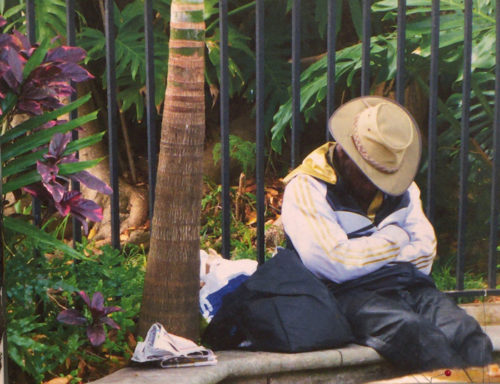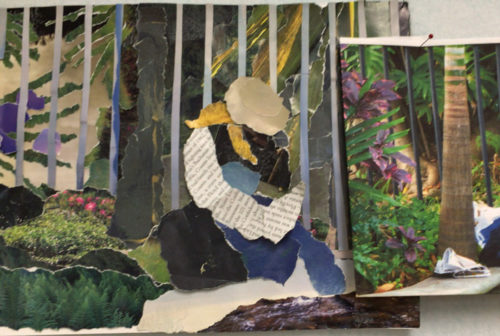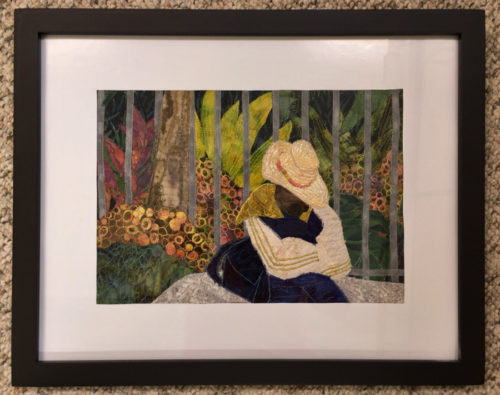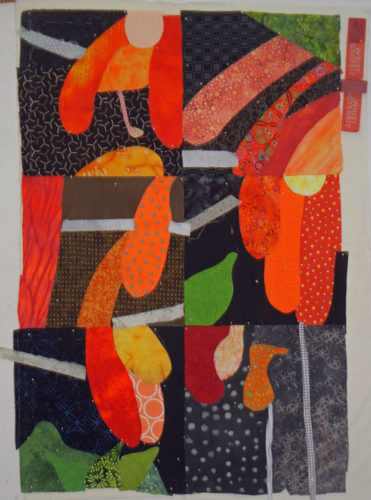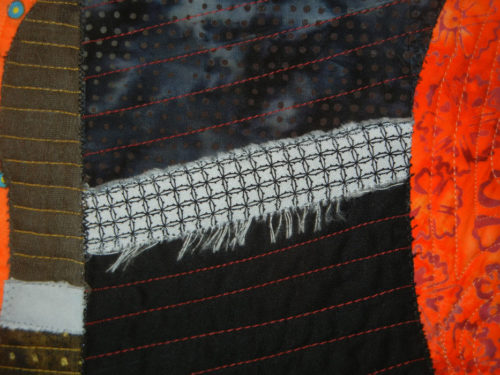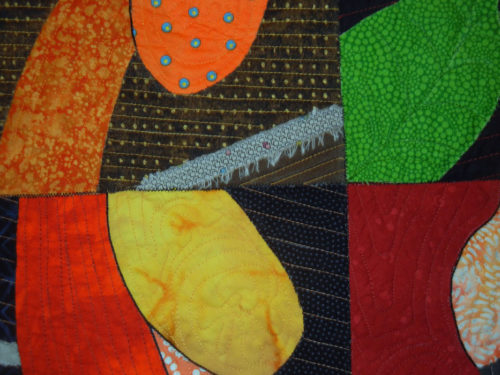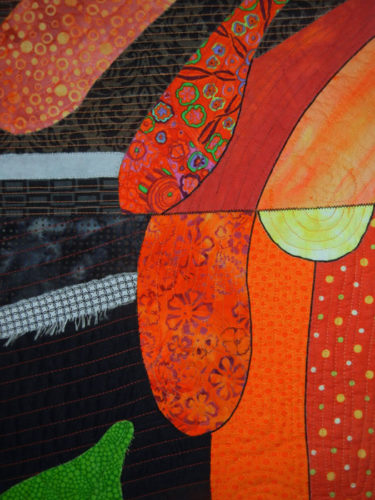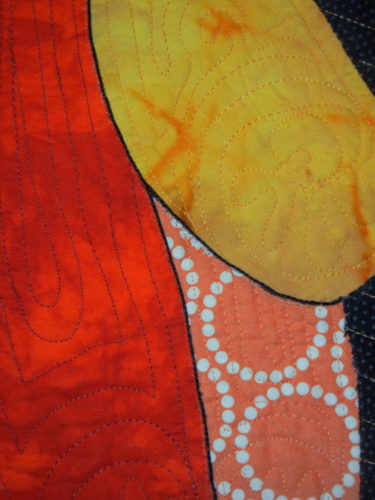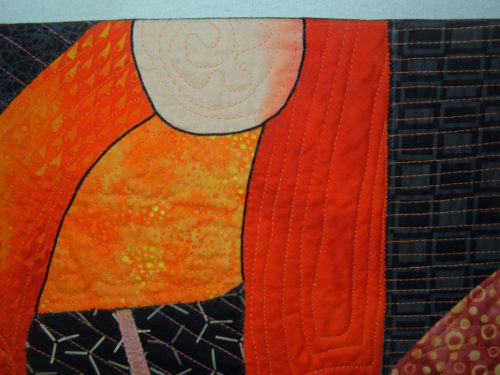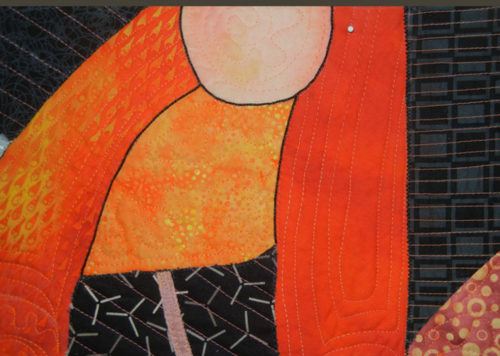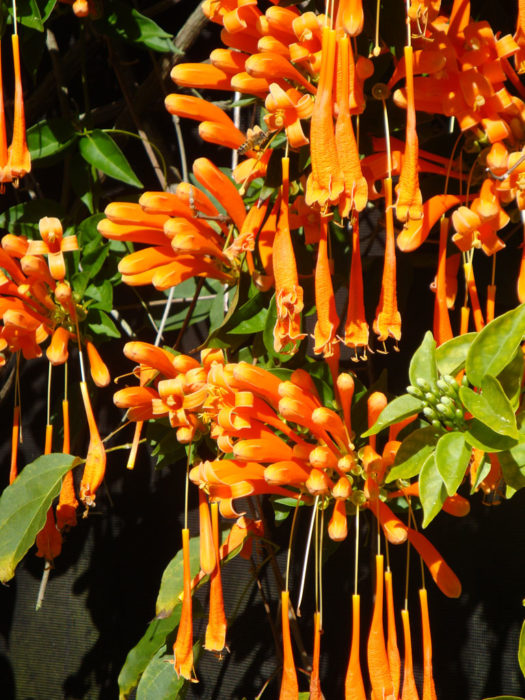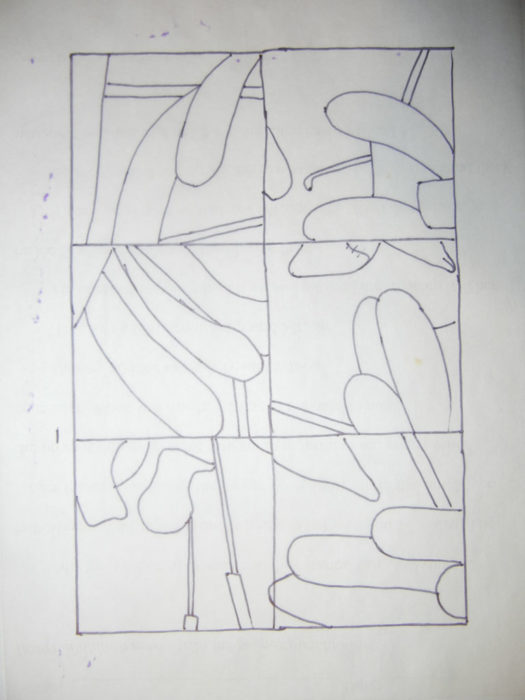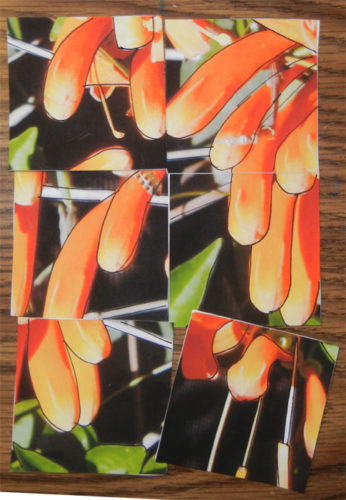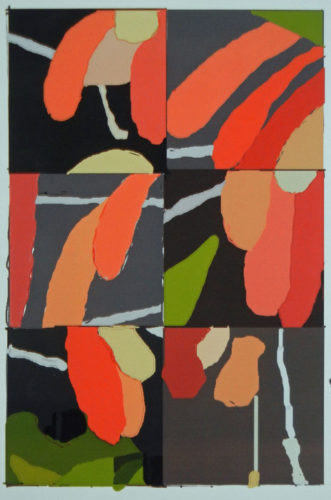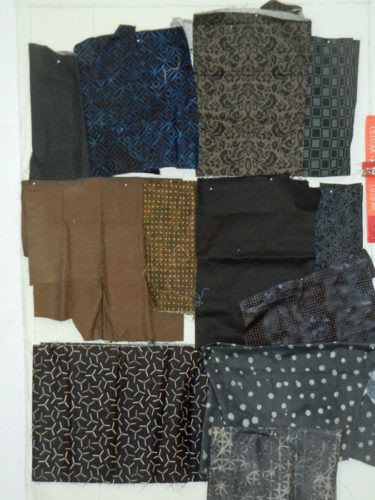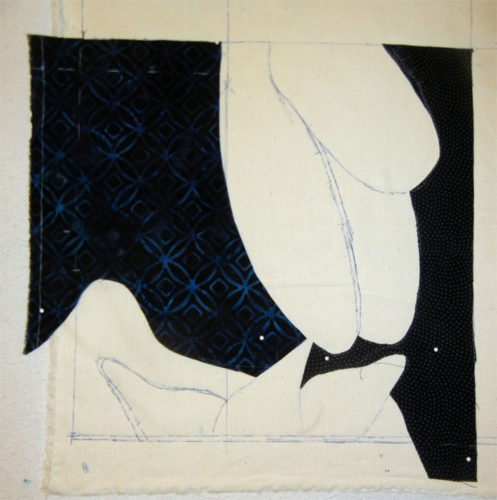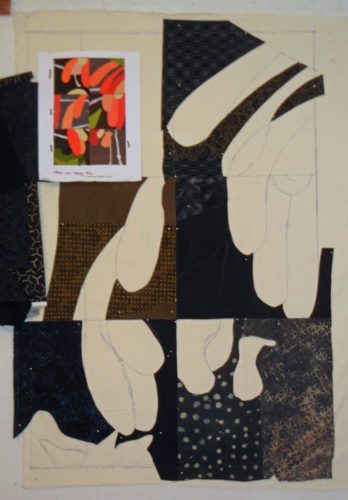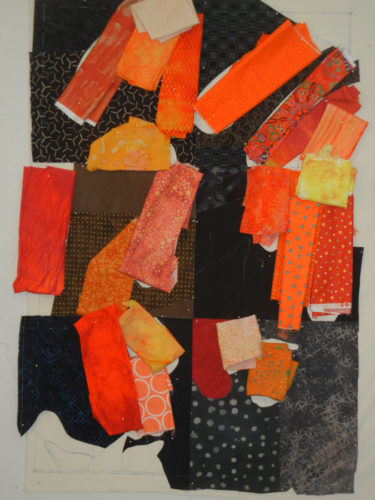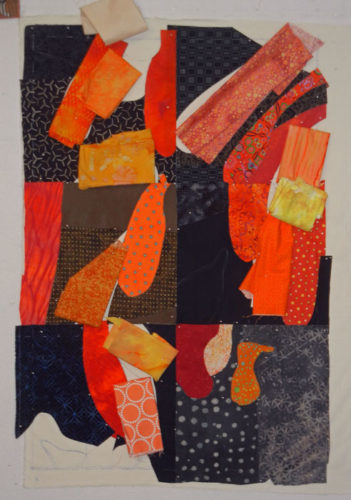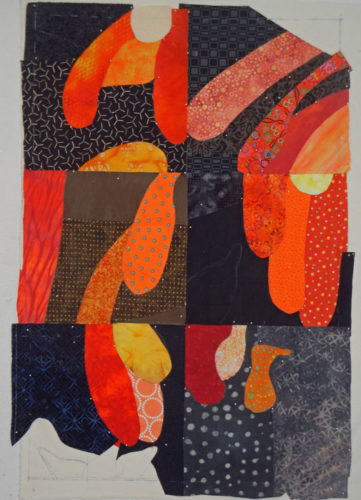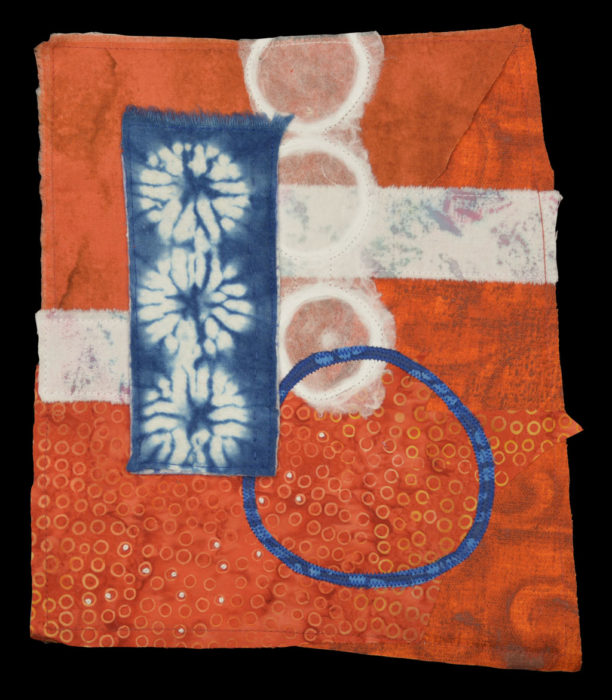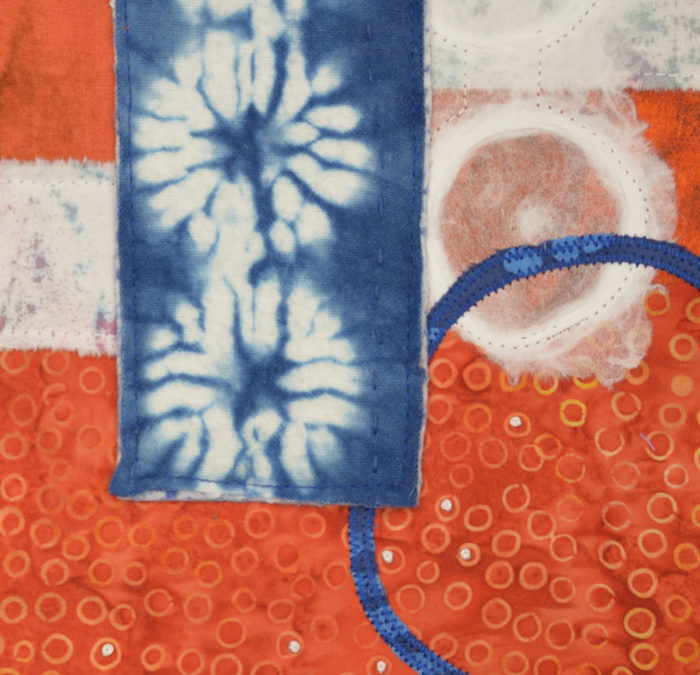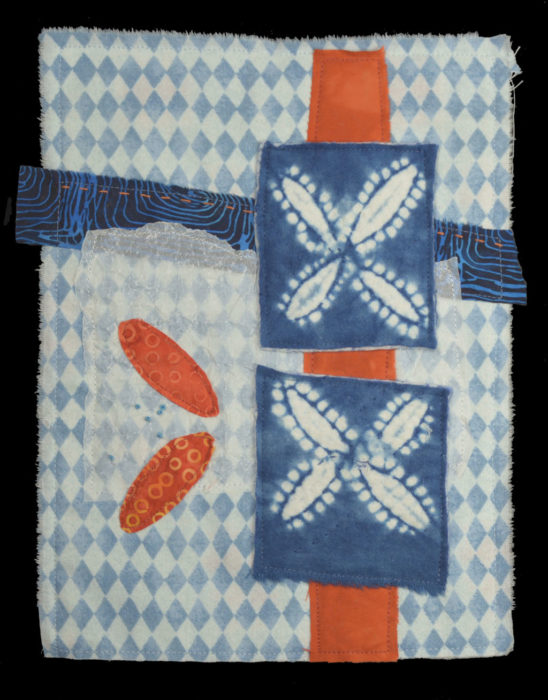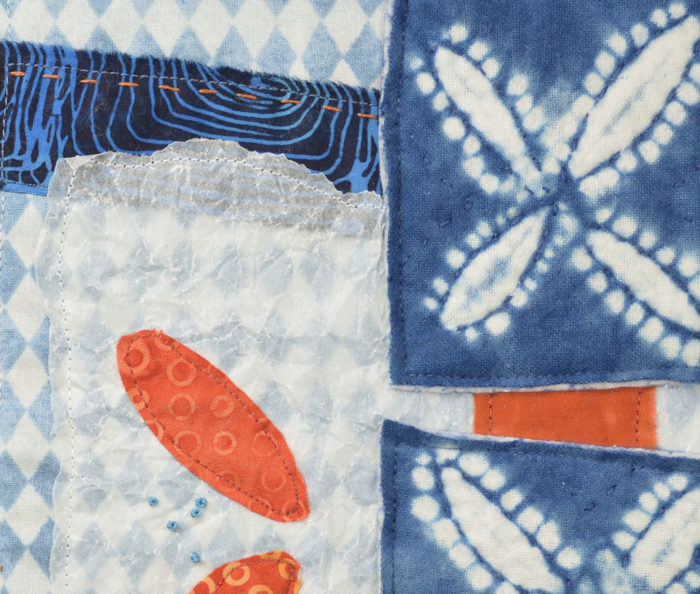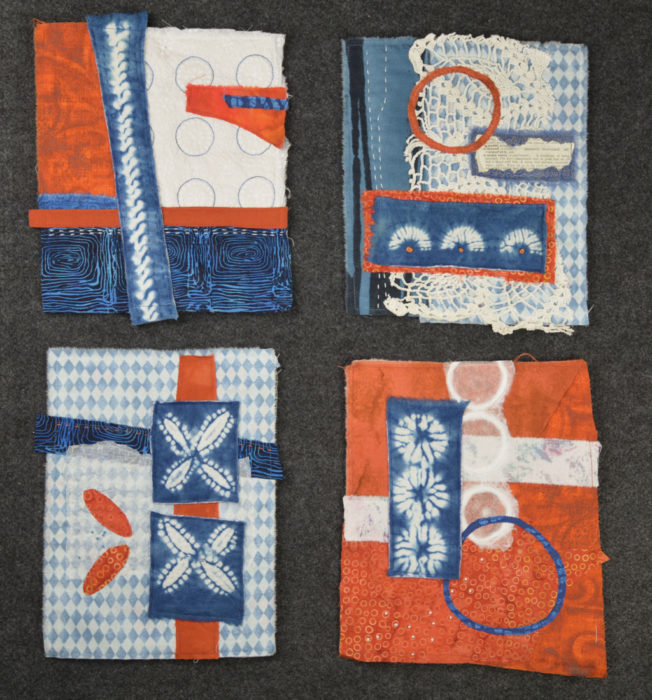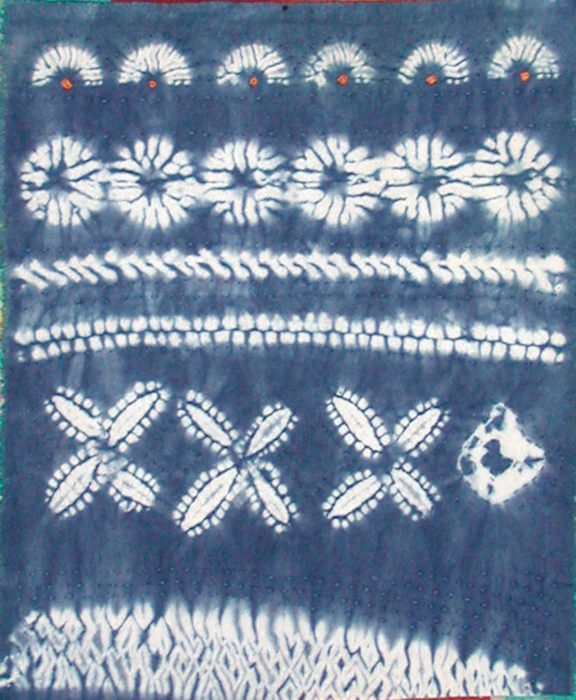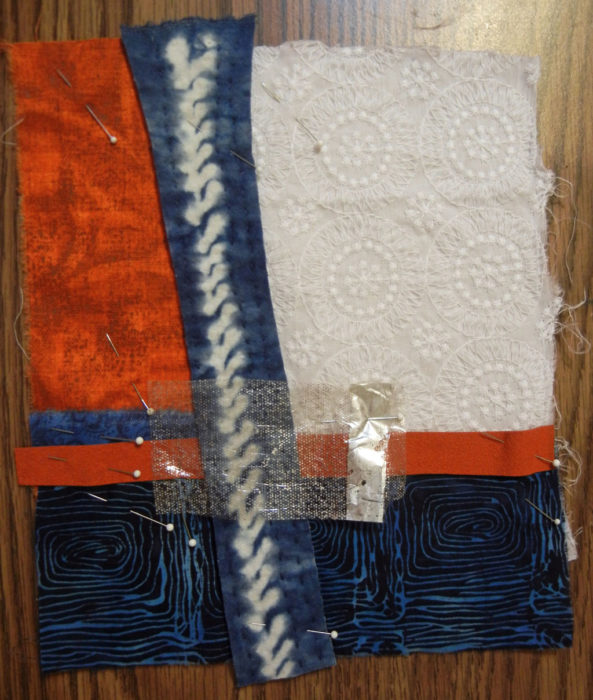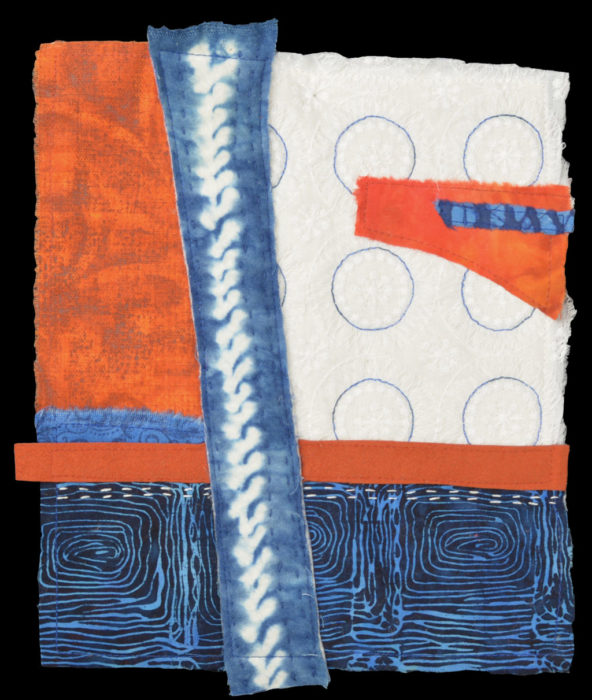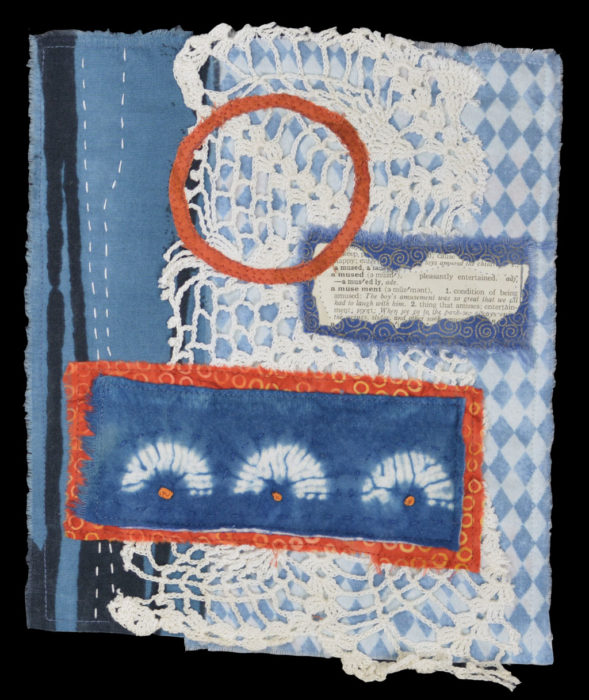These are the final pieces that make up the “Growth” exhibit, currently on display in Dunedin, FL. As you can see, the Florida members of SAQA (Studio Art Quilt Associates) are very talented!
This piece by Susan Rienzo was front and center.
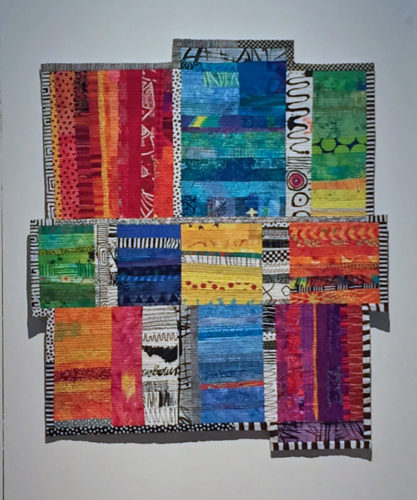
Doris Hulse made this piece, which includes references to Alice in Wonderland and other fairy tales.
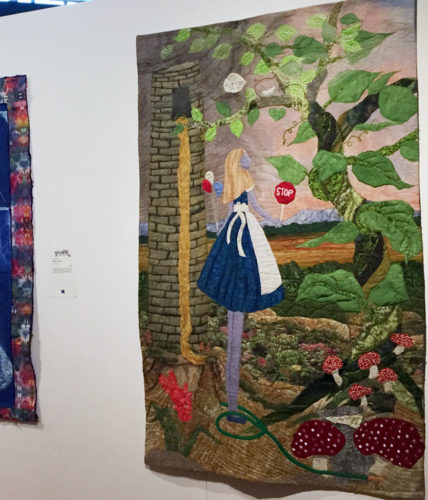
Gabrile DiTota used little girls dresses as a resist on her work, below right.
The two pieces on the left were made by (top) Gail Cassaday, and (bottom) Leslie Cohen. You can probably tell that the lower piece references a hurricane. Something we’re all too familiar with here in Florida.
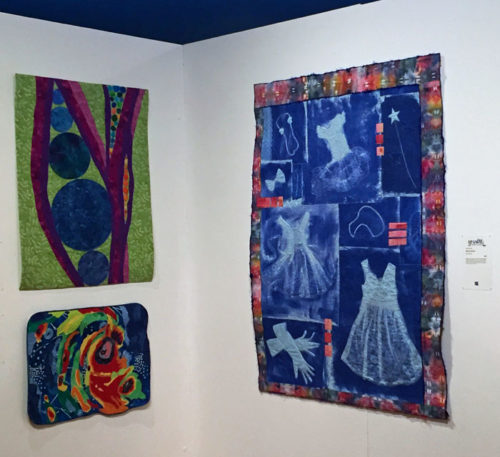
Gayle Wolfe’s piece, “WAGACA” is shown below. The title stands for “What goes around comes around.”
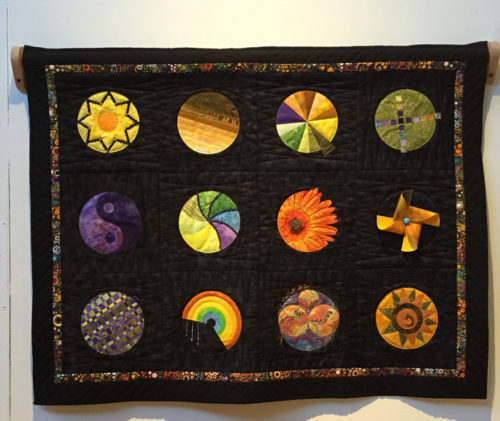
The pieces below were made by (top) Kathryn Robinson, (bottom) Regina Dunn, (left) Linda Hoffmeister.
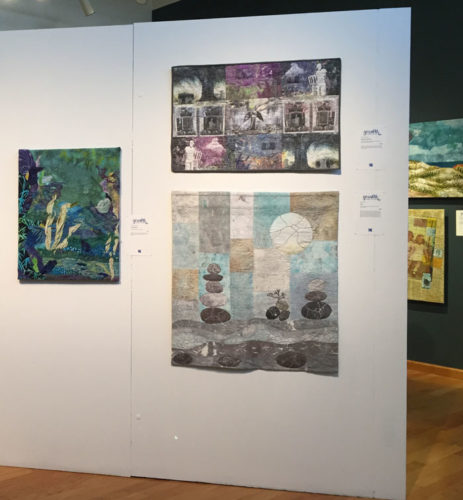
And, finally, these two pieces were made by (L-R) Ellen Nepustil and Barbara Watler.
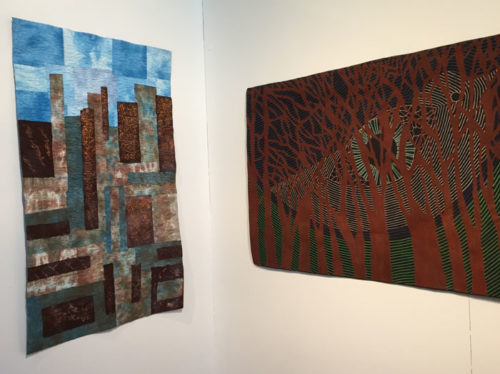
Actually, looking at my catalog I see that I neglected to get photographs of three more pieces made by these artists: Karol Kusmaul, Maya Schonenberger, Patricia Turner. My apologies, ladies.
I think you’ll enjoy this exhibit. Especially since THREE other art quilt exhibits are also on display in this arts center! Especially delightful is Karol Kusmaul’s “Shirt Tales” exhibit, consisting of 47 fabric portraits. Karol uses primarily thrift store fabrics, which add a wonderful folksiness. Here’s a sneak peek.
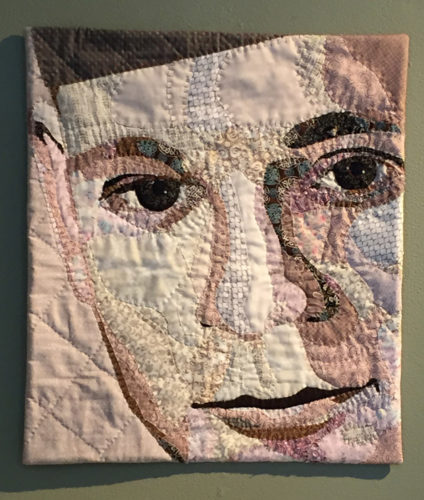
As you can see, her pieces are hand stitched.
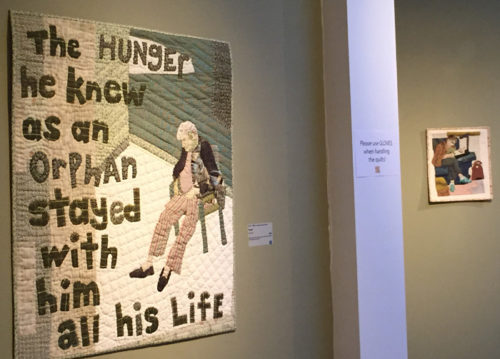
I know the top one is her dad and I believe the bottom left one is, too. They’re so narrative: personal, yet universal at the same time.
These exhibits will be up all summer, through August 18th. Find full details here.
Ellen Lindner

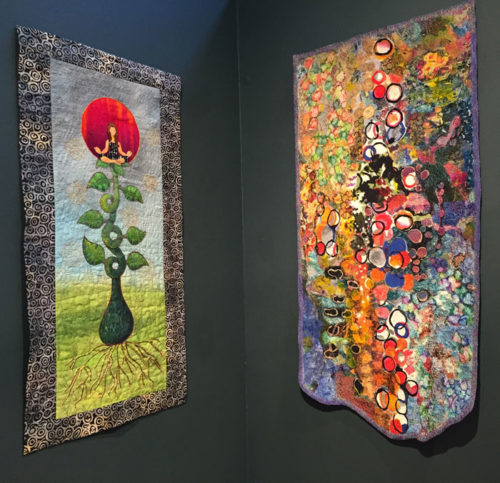
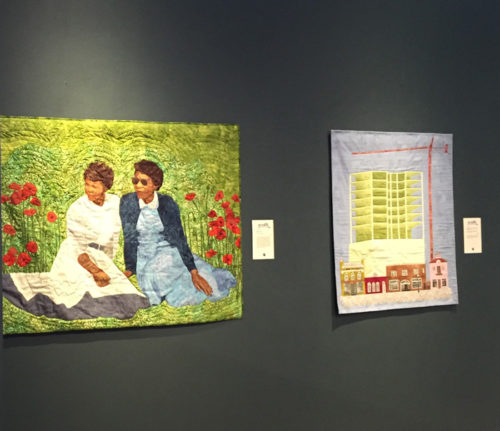
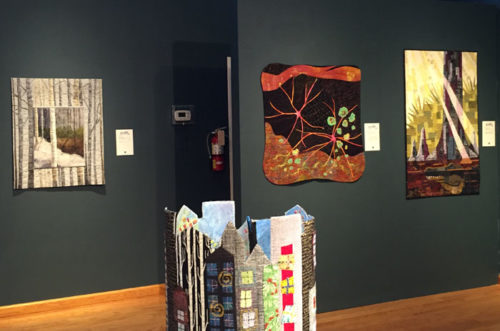
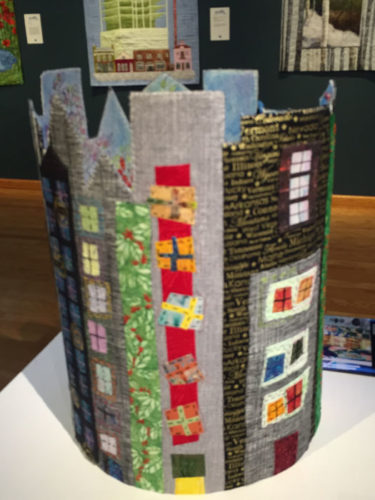
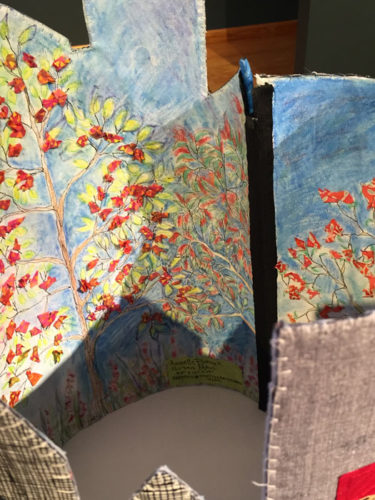
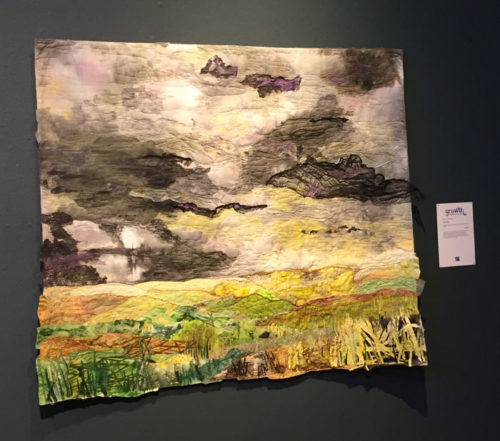
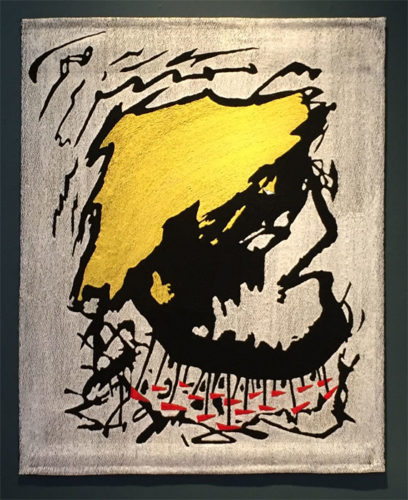
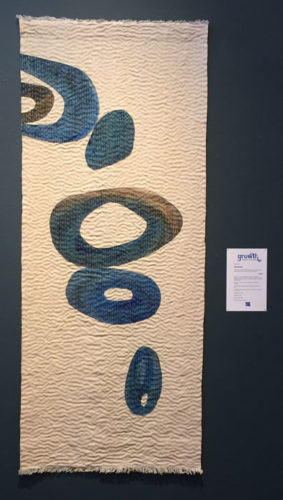
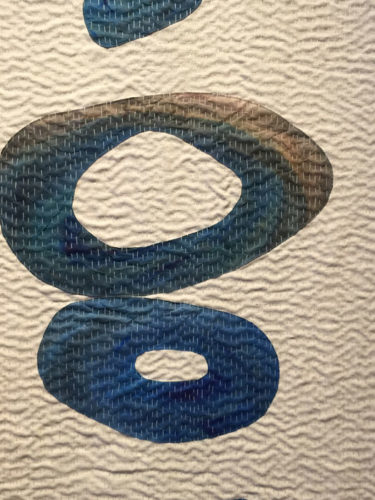
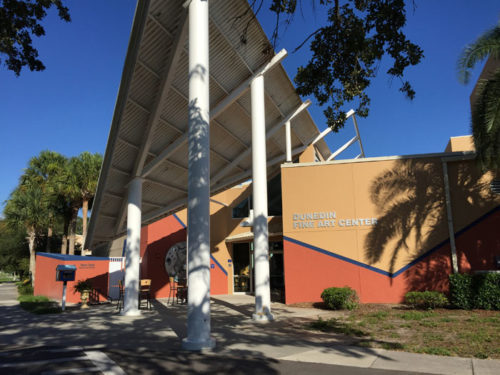
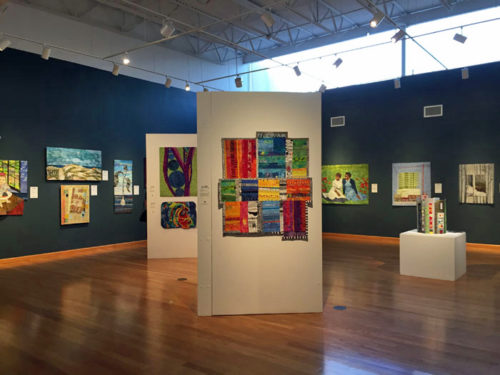
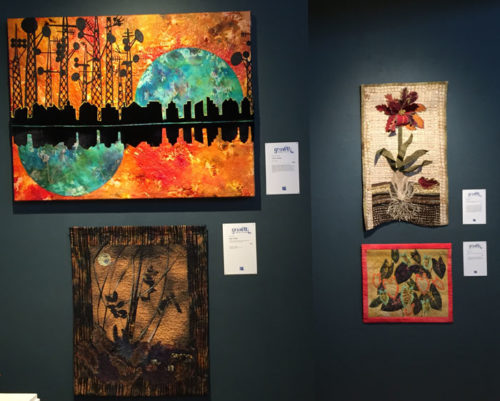
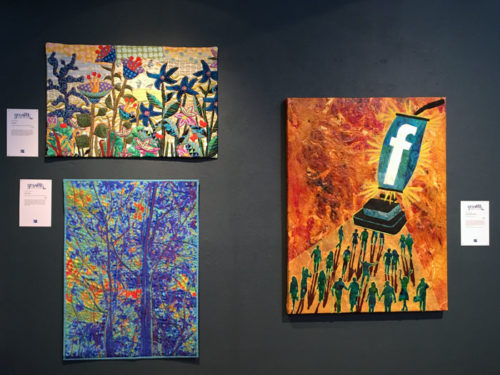
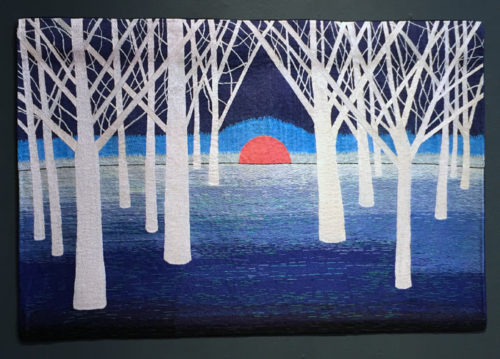
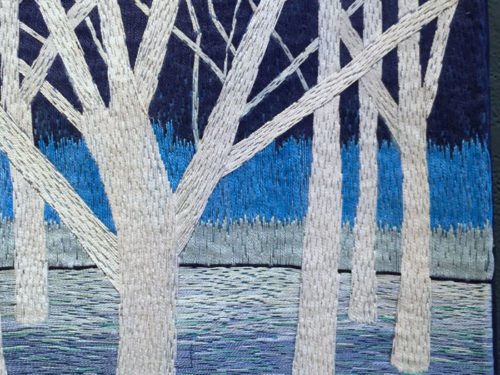
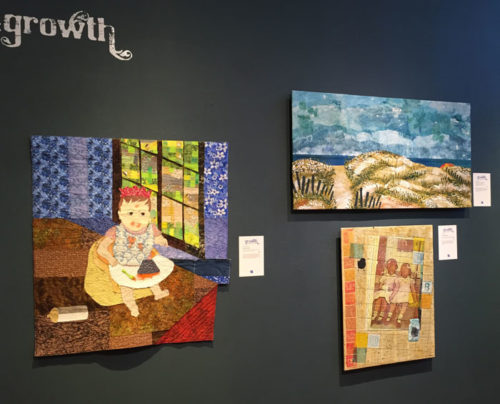
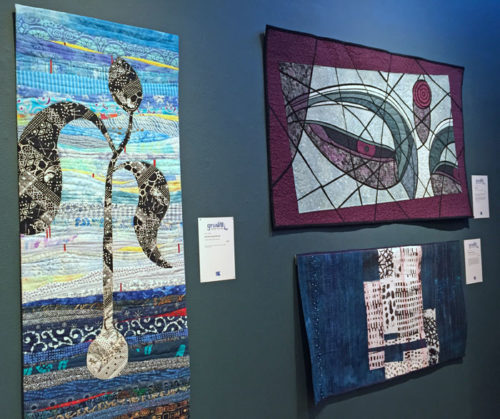
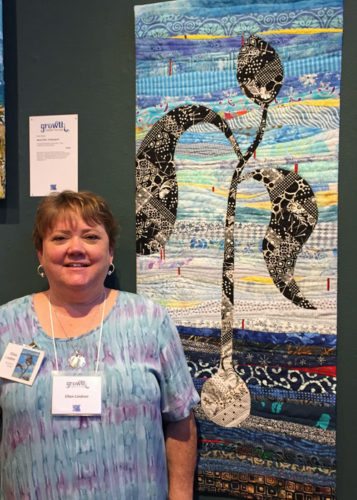
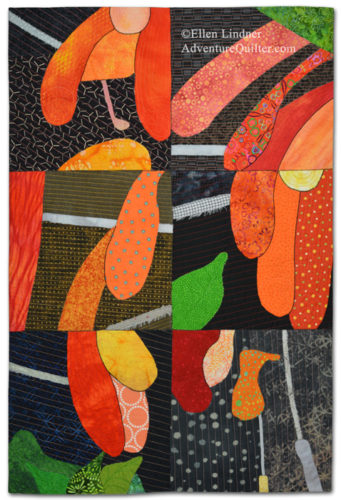
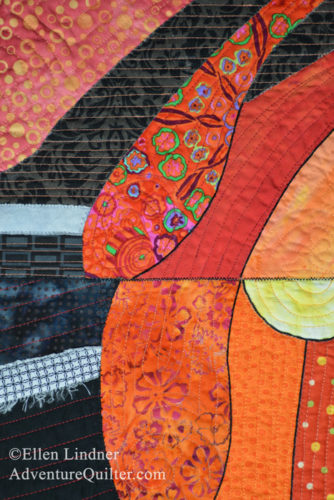
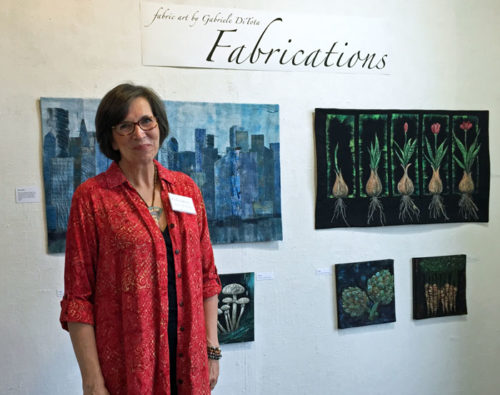
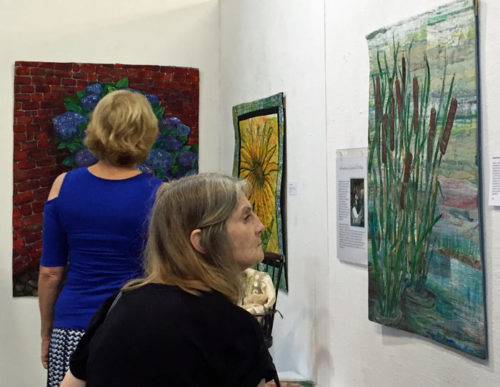
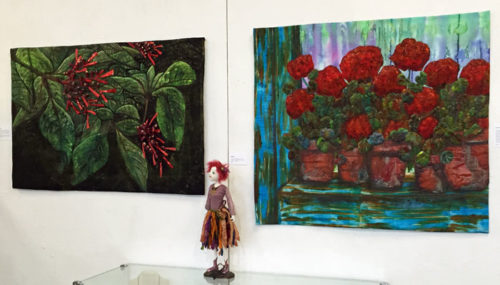
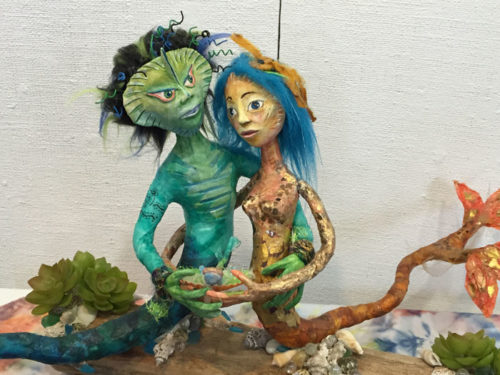
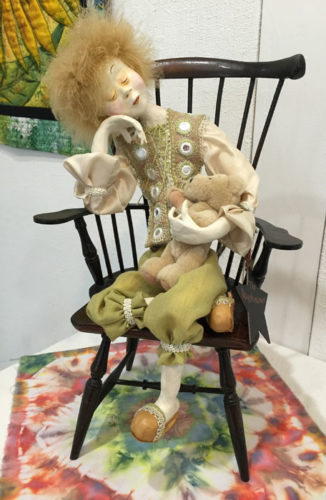 (Yes, she dyed the fabric above, shown under the chair. She’s got skills!)
(Yes, she dyed the fabric above, shown under the chair. She’s got skills!)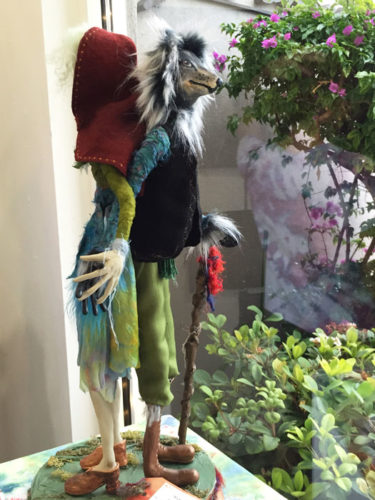
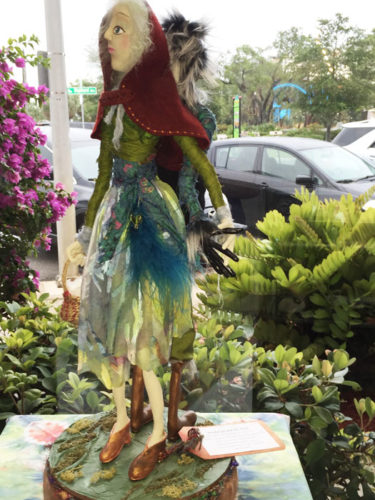
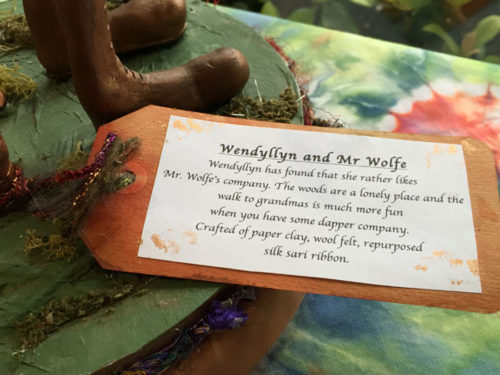
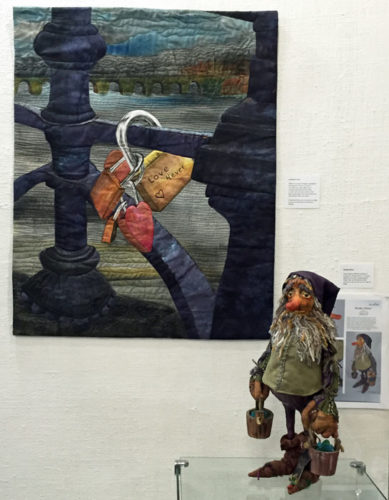
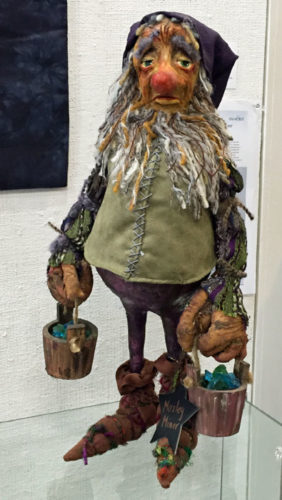
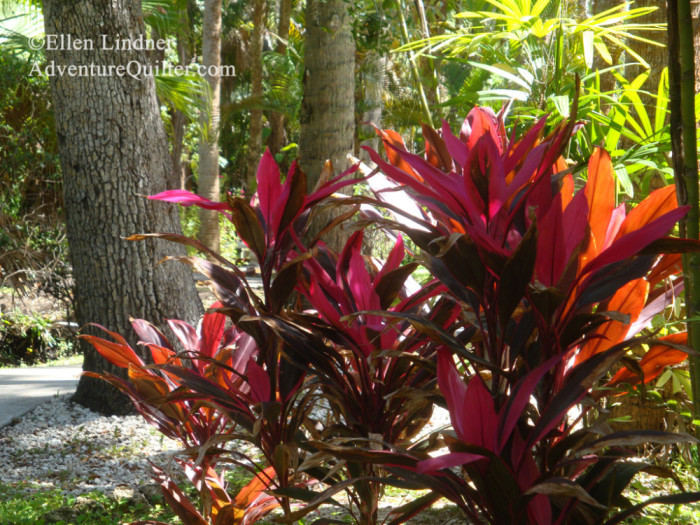
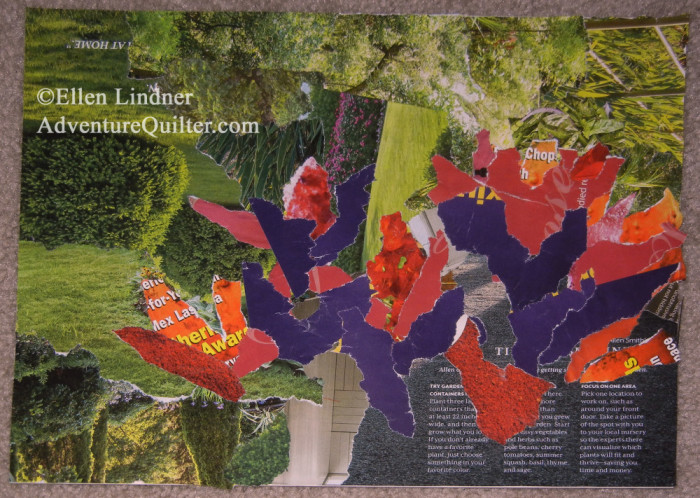
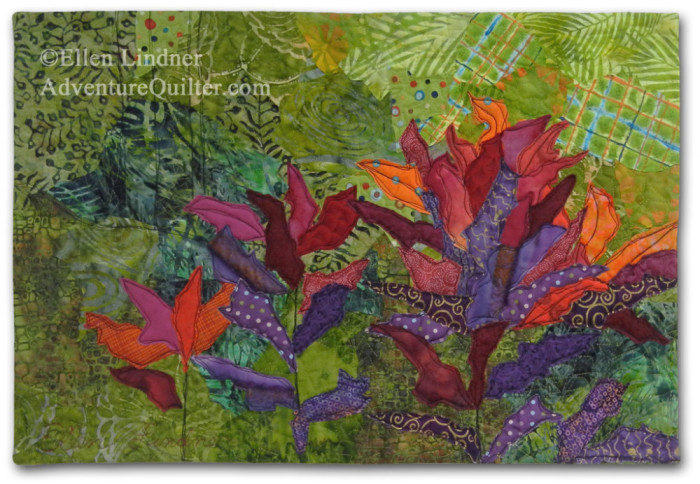 One of my readers, Suzanne Sanger, decided to give it a try and was kind enough to share her results with me (and with you.)
One of my readers, Suzanne Sanger, decided to give it a try and was kind enough to share her results with me (and with you.)